#Saint Stephen of Hungary
Explore tagged Tumblr posts
Text
SAINT OF THE DAY (August 16)

On August 16, the Catholic Church celebrates the feast day of King Saint Stephen of Hungary, the monarch who led his country to embrace the Christian faith during the 11th century.
Before the future saint's birth in 975, his mother, the Duchess Sarolt, is said to have received a vision in which the original Saint Stephen – the Church's first martyr – appeared telling her she would bear a son who would evangelize their land.
Together with her husband, the Hungarian Duke Geza, Sarolt is believed to have been converted and baptized by the bishop Saint Adalbert of Prague.
The same saint baptized their son Vaik in 985, giving him the name of Stephen.
Geza had desired to convert the Hungarians to the Catholic faith, a passion shared by Stephen once he reached adulthood and succeeded him in power.
After conclusively defeating an alliance of rival pagan nobility, he used their acquired wealth to build a monastery and invited clergy to convert the people.
Stephen established laws favoring Christianity over paganism and sent an emissary to Rome with a request for the Pope to proclaim him as king.
Pope Sylvester II accepted the request, sending him a crown and a gold processional cross, while also giving Stephen certain religious privileges.
He showed great diligence as king, while devoting the rest of his time to his religious duties – including charity toward the poor and sick, as well as the worship of God – and to his household.
Gisela, Stephen's wife, was the sister of the ruler later canonized as the Holy Roman Emperor Saint Henry II.
Greatly devoted to the Virgin Mary, Stephen had several churches built in her honor both in Hungary and outside the kingdom.
Her intercession is credited with preventing a war between Hungary and the Holy Roman Empire under Conrad II, and stopping an assassination plot against Stephen himself.
The Hungarian king also established a monastery in Jerusalem and set up institutions to aid pilgrims in other major cities.
Stephen counted saints among his friends and correspondents, and fulfilled the Pope's charge to use his royal authority for the good of the Church.
Suffering came to the king, however, when only one of his children survived to adulthood.
Stephen's only living son Emeric received a strong Catholic upbringing and was expected to succeed his father.
But Emeric died before Stephen after a hunting accident in 1031.
Emeric was later canonized as a saint in his own right, and Stephen eventually came to rejoice that his son had been permitted to enter God's presence before him.
The king's final years, however, were marked by illness as well as a succession dispute among his relatives.
In 1038, on the feast of the Assumption of the Virgin Mary, Stephen delivered his final words to leaders of the Church and state, telling them to protect and spread the Catholic faith.
To the Virgin Mary, the king directed one of his final prayers:
“To thee, O Queen of heaven, and to thy guardianship, I commend the holy Church, all the bishops and the clergy, the whole kingdom, its rulers and inhabitants; but before all, I commend my soul to thy care.”
Stephen of Hungary died on 15 August 1038.
He was buried alongside his son St. Emeric, and the two were canonized together in 1083.
3 notes
·
View notes
Text

Saint Stephen King of Hungary
975 - August 15, 1038
Feast Day: August 16
Patronage: Hungary, kings, masons, stonecutters, stonemasons and bricklayers
Saint Stephen I, a devout Christian king, was baptized at ten with his father, the Magyar chieftain Geza. Stephen married Gisela, daughter of Duke Henry of Bavaria and then succeeded his father as leader in 997 and devoted most of his reign to the devotion of the Christian faith. In 1000 Stephen was anointed the first king of Hungary. He established Churches, a monastery in Jerusalem for pilgrims, a system of tithes to support the Church and the poor, and abolished pagan customs. He died on August 15 after an assassination attempt and many illnesses. He was buried alongside his son St. Emeric, and the two were canonized together in 1083.
Prints, plaques & holy cards available for purchase here: (website)
32 notes
·
View notes
Text
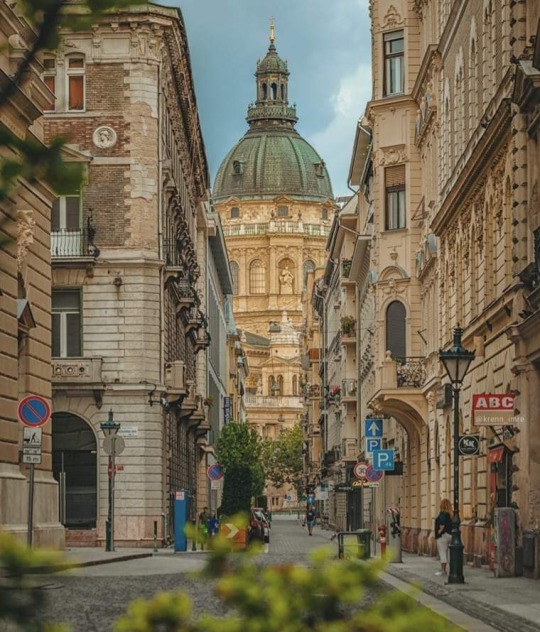
Budapest street view with Saint Stephen's Basilica from the State Opera House area - HUNGARY
#street view#vista de calle#saint stephen#san esteban#cathedral#catedral#state opera house#casa opera del estado#budapest#hungary#hungria#europe#europa
143 notes
·
View notes
Text

St. Stephen, King of Hungary.
#st stephen#king of hungary#kingdom of hungary#saints#catholicism#königreich ungarn#a.i.#magyar királyság#artificial intelligence#magyar király#a.i. art#árpád dynasty#árpád dinasztia#bearded men#szent istván király#saint stephen i
12 notes
·
View notes
Text
On the 30th of May is the Feast Day of the Transfer of the Relics of King Saint Stephen of Hungary
The Holy Right Hand is a Hungarian national and catholic relic, said to be the naturally mummified right hand of Stephen I, first king of Hungary, also called Saint Stephen.
Saint Stephen (in Hungarian Szent István) was born around 970-975 in Esztergom. He was a member of the Árpád dynasty, born a pagan but baptized a Christian. In 996, he married Gisela of Bavaria, sister of the future Holy Roman Emperor Henry II. After the death of his father, the Grand Prince Géza, Stephen fought an insurrection led by his cousin, Koppány, who claimed the throne in accordance with the rules of succession of Árpád. After defeating Koppány, Stephen was crowned as (first) King of Hungary with a crown received from Pope Sylvester II.
His coronation, which took place around 1021 years ago on Christmas Day in the year 1000, marked Hungary's entry into the family of European Christian nations. Stephen made the Church the main pillar of his authority, sending missionaries throughout his kingdom, founding bishoprics and abbeys, and mandating the building of churches. He died in 1038 and became the patron saint of Hungary.
The king's right hand, naturally mummified, is one of the most importantrelics Hungarian nationals, discovered during the opening of his stone tomb on August 20, 1083 in Székesfehérvár. (The identifying mark of the right hand was the king's ring, which adorned the hand). Therelic had a few adventures in his time. During the Turkish occupation, it ended up in Ragusa (today: Dubrovnik, Croatia), where it was guarded by Dominican friars, attracting increasing numbers of pilgrims to the city.

Source of picture: https://relics.es
Queen Maria Theresa (1717-1780), late successor to Saint Stephen on the Hungarian throne, negotiated the return of the Holy Right Hand in 1771, offering in return the historic city of Ragusa its protection against the threat of Russian invasion. In her charter decree, she specified how the relic, the mummified hand of Saint Stephen, was to be respected throughout the country.
During World War II, the Holy Right Hand was concealed - along with the Coronation Jewels - near Salzburg, Austria. The relic returned to Hungary in 1945, and it has been on display in St. Stephen's Basilica in Budapest since 1987.
Source: https://relics.es/en/blogs/relics/la-sainte-main-droite-detienne-ier-roi-de-hongrie
#saints#relics#St. Stephen of Hungary#Transfer of the Relics of King Saint Stephen of Hungary#Holy Right Hand#God#Jesus#Christ#Jesus Christ#Father#Son#Holy Spirit#Holy Trinity#christian religion#faith#hope#love#stress reliever
8 notes
·
View notes
Text

1 note
·
View note
Photo

Karl I proposal for Austria-Hungary
by rexetruriae
On 16 October 1918, Emperor Karl I of Austria and IV of Hungary proclaimed the People's Manifesto, which envisaged to turn the Empire into a federal state of five Kingdoms (Austria, Hungary, Croatia, Bohemia and Polish-Galicia), in an attempt to take into account the aspirations of the Croats, Czechs, Austrian Germans, Poles, Ukrainians and Romanians without affecting the integrity of the lands of the Crown of Saint Stephen.
63 notes
·
View notes
Text
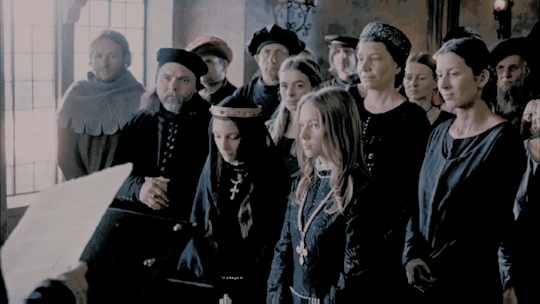
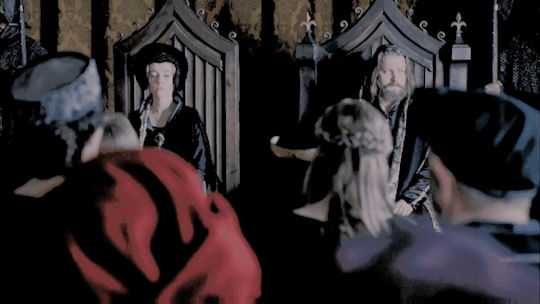
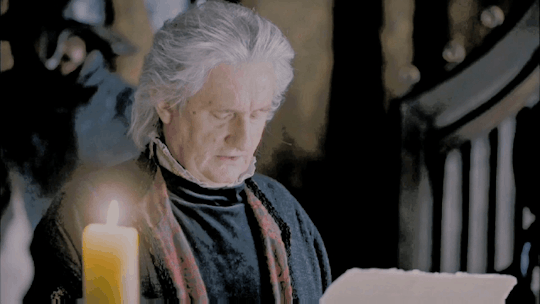
“It seems like she [ Elizabeth of Poland ] already prepared one will, during her first years of stay in Poland, but only the above-mentioned [ made in April 6th 1380 ] survived, which is by all means interesting. At the beginning, Elizabeth states that she wants to be buried in the Poor Clares monastery in Óbuda, which she founded and not in the royal graves in Szekesfehervar [ ... ]. She recommends the care of peace of her soul to her son and daughter-in-law, to whom she also entrusts the protection of her favourite monastery. Then there are bequeaths for the royal family, monasteries and courtiers and from them we can learn not only about the wealth of Elizabeth's treasury, but also about many beautiful features of her character.
Her son, Louis, receives several golden vessels, among them a cup, a gift from Naples on which next to the figure of Saint Ladislaus and the Hungarian count of arms, there was also engraved Polish eagle and then relics, except for a painting supposedly painted by Saint Louis, which was received by Poor Clares. To her daughter-in-law Elizabeth she leaves her castle in Óbuda and then her valuables and one of her breviaries, on which she used to pray. The granddaughter, Mary, receives golden tiara decorated with two eagles and a necklace, the second, Jadwiga receives a tiara with lilies and necklace with costly stones. Elizabeth also does not forget about Jadwiga, an orphan from her brother Casimir, who was still hiding in Buda castle, and leaves her the same tiara as the previous two.
Then Elizabeth disposes of her money, from which, after paying off her debtors, she allocates 500 gold florins for exequies after her death and 2,000 for funeral costs of her granddaughter after her son Stephen, the recently deceased Elizabeth, whose body she orders to be brought to Buda. Elizabeth also provides generously to her courtiers: Jan, the provost of Buda receives 400, knight Jakisz 300, page Ladislaus 200 gold florins, Klara de Pukar receives a village, a cart and 6 horses, 400 silver fines and the Queen's second breviary, which, however, Poor Clares are to receive after her death.
What is left after providing the Queen's confessor and a few other courtiers, jewels, dishes, robs, decorations, utensils and 1,000 golden florins is to be distributed equally among all the Queen's courtiers, both Polish and Hungarian. Pages and other courtiers who do not receive separate salery receives 1,000 florins and all the Queen's carriage horses, except six, which will accompany her funeral.
Finally, there are bequests for churches, in which she supplies all the Dominican, Franciscan and Augustinian monasteries throughout Hungary and a number of other temples. Having entrusted her ladies-in waiting to her daughter-in-law and her courtiers to her son, she asks him to not hold menagers of her estates and treasures responsible on the basis of false accusations, because they are trustworthy people, at the same time she hereby cancels all her previous testamentary decrees. She also appoints the executors of her will, including Cardinal Demtrius of Esztergom and her daughter-in-law, Elizabeth. To be sure, two copies of the will were prepared, one of them remained at court and the other was given to the Poor Clares in Óbuda for safekeeping...” — Jan Dąbrowski “Elżbieta Łokietkówna”
24 notes
·
View notes
Text

"Saint Stephen of Hungary, Pray for Us!" #SaintoftheDay
📷Stephen of Hungary / © sigurcamp / #GettyImages. #Catholic_Priest #CatholicPriestMedia #OraProNobis
13 notes
·
View notes
Text
To Be A Saint's God Child:
Patron Saints as Ancestors
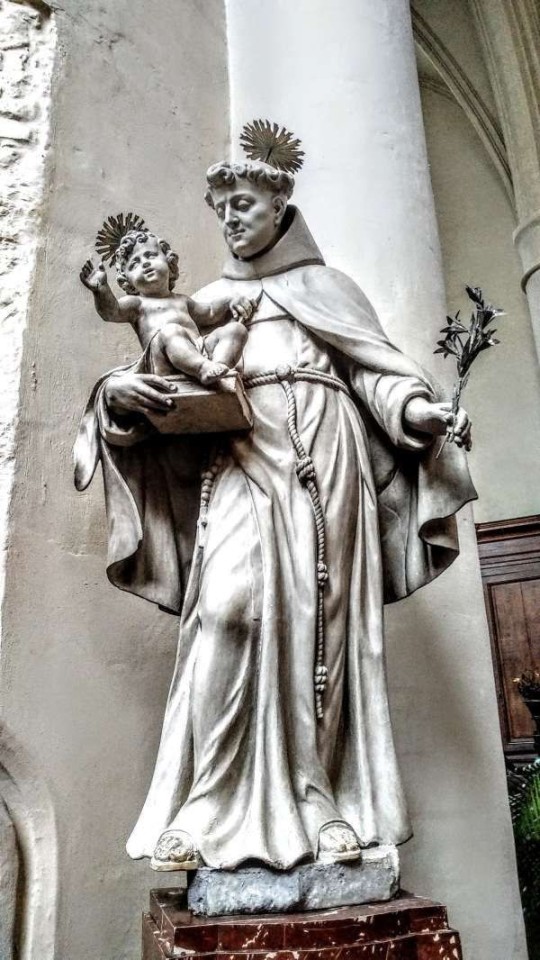
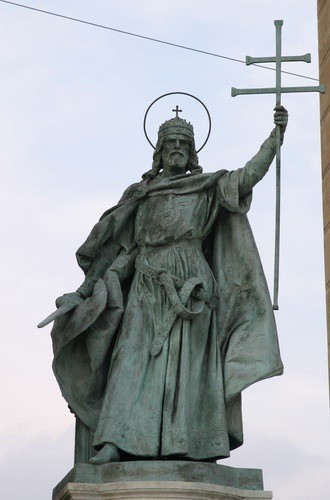
The Patron Saint of Portugal, St. Anthony of Lisbon and The Patron Saint of Hungary St. Stephen.
Most countries, sometimes even counties and towns, have a Patron Saint. A Saint who has been given the task to protect the land and its people. A Saint that our ancestors may have carried with them when they left their homelands.
Within my own understanding this favor, this protection and affection, given to our ancestors by this Saint is extended to their children and their children's children. Making those born under their care akin to god children they have sworn to watch over and provide spiritual guidance to.
It is a powerful and intimate connection that brings equally powerful results while working magic- though, in my experience, results still depend on the Saint's expertise and domain.
However, respect and love is a two way street and if one is to acknowledge this connection, then they must treat that Saint with the same care and veneration one would give an ancestor.
Acts of devotion can/may include:
- Researching the Saint's History and Myths, as well as Folklore from your ancestors' homeland.
- Researching how the Saint is venerated in said homeland.
- Acknowledging their Feast Day through simple prayer or other devotional acts. As well as preparing food traditionally eaten on the day.
- Simple prayers in the language of your ancestors or researching prayers that were written specifically to petition said Saint (sometimes there are even whole chaplets you can pray).
- Researching plants, colors or items connected to the Saint and using them as offerings.
In this way, by acknowledging the Patron Saint as a kind of god parent, we are acknowledging not only our immediate and present connection to the Saint, but also acknowledging their spiritual connection to our ancestors and the ways in which they may have shaped their lives. I don't necessarily think this role is purely extended to those who practiced a strict form of catholicism either. Personally, I feel, the Saint being made the Patron of the land gave something inherent to the land a Spiritual Form it could inhabit. That it gave an already exisisting face to the values and qualities inherent to its people. By praying to a Patron Saint, we are therefore praying to a representitive, and ideal, of those values that may have once shaped our ancestors and their culture. The Saint becomes apart of the land, and likewise aspects of the land are given a conscious form through the Saint. Therefore, we are equally honoring those aspects, and the land they come from, as an ancestor.
#magic#folk magic#spirituality#magic practitioners#witchblr#folklore#ritual magic#wizards#sorcerers#saint magic#christian folk magic#upg#ancestry#ancestor work#ancestor worship#ancestor magic
130 notes
·
View notes
Text
SAINT OF THE DAY (August 16)

On August 16, the Catholic Church celebrates the feast day of King Saint Stephen of Hungary, the monarch who led his country to embrace the Christian faith during the 11th century.
Before the future saint's birth in 975, his mother, the duchess Sarolt, is said to have received a vision in which the original Saint Stephen – the Church's first martyr – appeared telling her she would bear a son who would evangelize their land.
Together with her husband, the Hungarian duke Geza, Sarolt is believed to have been converted and baptized by the bishop Saint Adalbert of Prague.
The same saint baptized their son Vaik in 985, giving him the name of Stephen.
Geza had desired to convert the Hungarians to the Catholic faith, a passion shared by Stephen once he reached adulthood and succeeded him in power.
After conclusively defeating an alliance of rival pagan nobility, he used their acquired wealth to build a monastery and invited clergy to convert the people.
Stephen established laws favoring Christianity over paganism and sent an emissary to Rome with a request for the Pope to proclaim him as king.
Pope Sylvester II accepted the request, sending him a crown and a gold processional cross, while also giving Stephen certain religious privileges.
He showed great diligence as king, while devoting the rest of his time to his religious duties – including charity toward the poor and sick, as well as the worship of God – and to his household.
Gisela, Stephen's wife, was the sister of the ruler later canonized as the Holy Roman Emperor Saint Henry II.
Greatly devoted to the Virgin Mary, Stephen had several churches built in her honor both in Hungary and outside the kingdom.
Her intercession is credited with preventing a war between Hungary and the Holy Roman Empire under Conrad II, and stopping an assassination plot against Stephen himself.
The Hungarian king also established a monastery in Jerusalem and set up institutions to aid pilgrims in other major cities.
Stephen counted saints among his friends and correspondents. He fulfilled the Pope's charge to use his royal authority for the good of the Church.
Suffering came to the king, however, when only one of his children survived to adulthood.
Stephen's only living son Emeric received a strong Catholic upbringing and was expected to succeed his father. But Emeric died before Stephen, after a hunting accident in 1031.
Emeric was later canonized as a saint in his own right, and Stephen eventually came to rejoice that his son had been permitted to enter God's presence before him.
The king's final years, however, were marked by illness as well as a succession dispute among his relatives.
In 1038, on the feast of the Assumption of the Virgin Mary, Stephen delivered his final words to leaders of the Church and state, telling them to protect and spread the Catholic faith.
To the Virgin Mary, the king directed one of his final prayers:
“To thee, O Queen of heaven, and to thy guardianship, I commend the holy Church, all the bishops and the clergy, the whole kingdom, its rulers and inhabitants; but before all, I commend my soul to thy care.”
St. Stephen of Hungary died on 15 August 1038. He was buried alongside his son St. Emeric, and the two were canonized together in 1083.
14 notes
·
View notes
Text
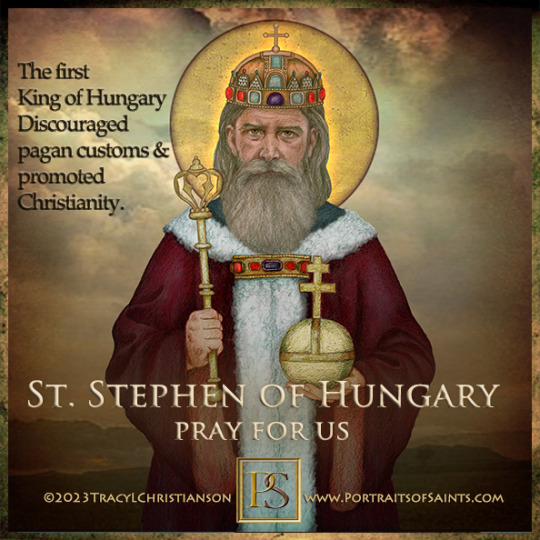
Saint Stephen King of Hungary
975 - August 15, 1038
Feast Day: August 16
Patronage: Hungary, kings, masons, stonecutters, stonemasons and bricklayers
Saint Stephen I, a devout Christian king, was baptized at ten with his father, the Magyar chieftain Geza. Stephen married Gisela, daughter of Duke Henry of Bavaria and then succeeded his father as leader in 997 and devoted most of his reign to the devotion of the Christian faith. In 1000 Stephen was anointed the first king of Hungary. He established Churches, a monastery in Jerusalem for pilgrims, a system of tithes to support the Church and the poor, and abolished pagan customs. He died on August 15 after an assassination attempt and many illnesses. He was buried alongside his son St. Emeric, and the two were canonized together in 1083.
Prints, plaques & holy cards available for purchase here: (website)
73 notes
·
View notes
Text

B U D A P E S T
111 notes
·
View notes
Text

St. Stephen King of Hungary.
#saints#catholicism#christianism#maguar királiság#königreich ungarn#st stephen#king of hungary#árpád dynasty#bearded men#szent istván király#árpád dinasztia#magyar király
6 notes
·
View notes
Text

The Holy Right Hand of King Saint Stephen, the first King of Hungary. He died in 1038 and was canonized in 1083.
St. Stephan's Basilica, Budapest
Feb. 2023
#hungary#king#relic#budapest#hungarian history#hungarian art#tomb#original photography#photography#taphophile#taphophilia#photographers on tumblr#lensblr#human remains#wanderingjana
15 notes
·
View notes
Text
Liechtenstein - Marie Elisabeth Alberta Stefani Vogel
Marie - Didn't every girl have some form of Mary in her name back then?/j
Elisabeth - after both Saint Elisabeth of Hungary & Erzsébet
Alberta - after Albert II of Germany
Stefani - after Stephen I first king of Hungary
Vogel (Surname) - from 'Singvogel' a nickname Austria used for her when she was little
Germany - Friedrich Ludwig Stephan Heinrich Leopold Bielschmidt
Friedrich - after Friedrich the Great
Ludwig - after Louis the German first king of East Francia
Stephan - after Stephen I first king of Hungary
Heinrich - after Heimeric (Germania)
Leopold - No reason, just gotta keep giving him names for the bit.
I know I posted their full names before but I don't remember if the explanation made it or not so here.
#hws germany#hws liechtenstein#hetalia#yes her name used to Lieslotte i decided to change it to Elisabeth shhh
15 notes
·
View notes